Plaza Park
North Main Street/Los Angeles Street/Cesar E. Chavez Avenue – map
Declared: 4/1/70
On Labor Day, while Los Angeles diehards were enjoying an ice cream social at Heritage Square, I decided to honor the city’s original pobladores by recreating their journey from the San Gabriel Mission to downtown. But while the original trek was made on foot, my pilgrimage was made of driving to Universal City’s Red Line station and taking the subway. C’mon, it was hot.
Earliest known photo of the Plaza - 1859.
Had I waited ‘til Tuesday, it would’ve been the exact 226th anniversary of the city’s founding, because it was on September 4, 1781, under the orders of Governor Philip de Neve, Corporal Jose Vicente Feliz led 44 folks to settle El Pueblo de la Reina de los Angeles.
Edward A. Beilharz, in Felipe de Neve: First Governor of California, wrote
“The plaza was to be 200 feet wide by 300 feet long, placed so as to present its corners to the cardinal points of the compass… Around the plaza, building lots of twenty by forty varas should be parceled out, leaving one of the sides on the east side free for public buildings and a town church."
Ten years later, 1869.
Now, the site of the Plaza today is not the original location. It’s the second, third, or maybe even the fourth. It’s believed that one of the earlier plots was around where the current Pershing Square sits. It’s also thought that at least one of the first three was washed away in a flood. In any event, the current one dates from as early as 1815.
Except for the saving/rehabilitation of Plaza (more on that later), this post isn’t so much about the history of the site, but rather a catalog of the buildings and monuments in the park and surrounding area. I’ll start on the Main Street side and go in sort of clockwise direction. It’ll be mentioned again, but an invaluable resource here has been William D. Estrada’s Los Angeles’s Olvera Street (2006). It’s one of those Arcadia Publishing books, a great overview, and includes a handy map.
To begin, looking across the street is Campo Santo, the city’s first graveyard, and Iglesia Nuestra Señora Reina de los Angeles (Plaza Church). Both were designated city landmarks prior to the Plaza, and have already been featured on this site.
Simpson/Jones Building (1894) – After John Jones’s adobe home was removed from this spot, his widow, Doria, built this building and the Jones Building. The Simpson/Jones Building has been home to William Gregory Engines, the Diamond Shirt Company, and the Soochow and La Luz del Dia Restaurants. It as altered to look like a Mexican bank around 1960. The name stems from Jones’s daughter, Constance Jones Simpson, who inherited the property in 1908.
Jones Building (late 1880s) – Also built by Doria Deighton Jones. It originally divided into five shops: a cigar store and shooting gallery; machines shop; plumbing and tin shops; harness and leather shops; and blacksmith shops.
Machine Shop (1910-1920) – built for light industrial use around World War I, it later housed the Leo Carillo Theatre.
Sepulveda House (1887) – built by Eloisa Martinez de Sepulveda for stores and a boarding house. It later held an arts center, import shop, tea room, the Yale Puppeteers, and a USO Canteen. It’s now the Park’s Vistors’ Center.
Pelanconi Warehouse (1855-1857) – Lorenzo Pelanconi and his mom, Isabel Tononi, built this for wine storage. The building, along with the Pelanconi House behind it, now serves as La Golondrina Café, a restaurant dating back more than 75 years.
Hammel Building (1909 – Hudson and Munsell) – For $4,000, Marie Hammel had this built for a machine shop. Frank Arconti, manager of the Italian Hall, used it for a bicycle shop and hardware store for a time.
Italian Hall (1907-1908 – Julius Krauss) – This building, too, was built for Marie Hammel. It had a meeting hall for Italian-related events upstairs and shops below. Upon its opening, it became the home for the Societa Italiana de Mutua Beneficenza.
We're now standing on Alameda Street.
Old Winery (ca. 1870-1915) – today the El Pueblo Gallery.
Plaza Substation (1903-1904) – This power-transforming plant was built by the Los Angeles Railway Company. It converted AC to DC for the city’s yellow cars.
Placita de Dolores (1979)
Father Hidalgo in Front of the Church of Dolores, a mural by Eduardo Carillo.
Placita de Dolores Bell – This Bell of Dolores replica represents Mexican independence from Spain in the early 1800s.
Indian Gardens (April 17, 1986) – “… dedicated to the memory of the first people who lived in what is now the County of Los Angeles. Some of the earliest Indians were members of the Uto-Aztecan linguistic family or were descended from the Shoshone Tribe.” The garden contains plants the local Yang-Na village used for food, clothing, or ceremonial purposes.
Plaza Methodist Church (1925-1926) – Abel Lara and Randy Carillo are the pastors of this church, built on the site of the 1830 adobe of Agustín Olvera (1820-1876), Los Angeles's first County Judge.
Biscailuz Building (1925-1926) – Located on the site of the Juan Sepulveda Adobe it was designed as the United Methodist Church Conference Headquarters and the Plaza Community Center. Today it’s the Consulate-General of Mexico. It’s named after L.A. County Sheriff Eugene Biscailuz who helped out Christine Sterling in saving Olvera Street. The Blessing of the Animals mural is by Leo Politi. The Blessing occurs every Easter Sunday.
Leo Politi Tree – dedicated to the artist/author/muralist on May 5, 1984. More or less the site of the Lugo Adobe, built as a home in 1838 by the prominent Don Vicente Lugo. The adobe later became the birthplace of Southern California’s first college, evolving into Loyola-Marymount University. Even later the Lugo house was a Buddhist temple.
Father Serra Statue in Father Serra Park (1932) – Serra traveled with Gaspar de Portola on his Californian exploratory expedition. He went on to found the first nine missions in Alta California.
Garnier Building (1890 – Abraham Edelman) – Well, this is really about two-thirds of the Garnier Building. It was named for Frenchman Phillippe Garnier, who, with his brothers, owned Rancho Los Encinos. This building was constructed for Chinese commercial tenants, housing important Chinese organizations, including the Chinese Consolidated Benevolent Association, the Chinese American Citizens Alliance, and Chinese churches and schools. (Remember, the Plaza’s east side was the site of L.A.’s original Chinatown.) The southern third of the building was wiped away to make way for the Hollywood/Santa Anna Freeway in the mid-1950s. Now home to the Chinese American Museum of Los Angeles.
Masonic Hall (1858) – Designed by Mason William Hayes Perry and James Brady, the upper hall was set aside for Lodge 42 Free and Accepted Masons, L.A.’s first American organization. The lower floor was used as furniture and cabinet-making shop (mainly coffins). The Masons stuck around only for a decade. After seeing the building used as boarding house and pawn shop, the Masons moved back into the building in 1981.
Merced Theatre (1870 – Ezra F. Kysor) – William Abbott named the Merced Theatre after his wife, Maria Merced Garcia. The second-story 400-seat theater opened with a performance of Fanchon the Little Cricket on January 30, 1871. (The Abbotts lived on the top floor; shops were on the first.) the popularity of nearby Wood’s Opera House (1876) and a smallpox epidemic led to the Merced’s closing on New Year’s Day, 1877.
Pico House (1870 – Ezra F. Kysor) – After selling what made up a huge chunk of the San Fernando Valley, the last governor of Mexican California, Pio Pico, constructed this, the first three-story building in L.A. It opened on June 9, 1870. Pico owned the hotel, with its 82 bedrooms, 21 parlors, 1 French restaurant, and pair of courtyards, until 1880. A dozen years later it was renamed the National Hotel, during which tenure a balcony was added to the Main Street and Plaza sides. The city took over the hotel in 1953. Restoration work was completed in the 1960s and then again in the early 1980s.
Pico House, Merced Theatre, Masonic Hall
Vickrey/Brunswig Building and Plaza House
Vickrey/Brunswig Building (1888)
Plaza House (1883) – Well, clearly the Vickrey/Brunswig and Plaza House buildings are undergoing renovation. But, you know, I’m looking at the Plaza House shot, and I see a lot of light seeping through. It kind of makes me wonder how much of the original 1883 building will remain upon completion.
The avenue leading off to the right is Sanchez Street.
Hellman/Quon Building (1900) – built by banker Isaias W. Hellman, this building, once known as the “Old Chinese Store”, was bought by Quon How Shing in the 1920s. It occupies the site of Pio Pico’s residence and, briefly, the capital of Mexican California.
Plaza Fire House (1884) – Now a California Landmark, this fire house was the first in the city designed for firefighting equipment and crew.
Plaza Park Gazebo (1962)
King Carlos III Statue (1976) – a monument to man who ordered the pueblo’s founding.
Felipe de Neve Statue – Felipe de Neve was the Spanish governor from 1775-1782. It was he who chose the site and laid out the original pueblo. Looked a lot like Elvis, I think. Vegas Elvis.
One of the Plaza's four giant Moreton Bay Fig Trees.
Officially renamed from Wine Street in 1877, Olvera Street wouldn’t be around today if it weren’t for the efforts of a variety people, but especially Christine Sterling (1881-1963). Sterling’s failing campaign to rehabilitate the blighted street was kicked into overdrive in 1928 with the imminent demolition of the Avila Adobe. The street was officially closed off to traffic a year later, and it re-opened as Paseo de Los Angeles on Easter, 1930. Here stands Sterling, on the right, at a ceremony with Mary Foy.
Another shot of the Plaza Substation.
Casa California – located in the Machine Shop Building, former home of the Olvera St. Theatre.
Larry Guerrero landed on Mars and no one told me??
Pelanconi House (1855-1857) –Guiseppe Covaccichi’s old home is “the oldest house made of fired brick still standing in Los Angeles”. Covaccichi co-owned the winery across Olvera Street.
Avila Adobe (ca. 1818) – Los Angeles’s oldest building. It was the home of Don Francisco Avila, the mayor, or alcade, of the city way back in 1810. During the Mexican-American War, Commodore Robert Stockton used it as his military headquarters for two weeks. After the Civil War, the adobe became a restaurant and then a boarding house. The Avila Adobe was restored heavily after the 1971 Sylmar earthquake.
For source material, I got most of the information here from on-site markers (which sometimes contradicted themselves). W.W. Robinson's 1959 book, Los Angeles from the Days of the Pueblo was a help, but the William D. Estrada book and its map were invaluable. Look out for his soon-to-be-published The Los Angeles Plaza: Sacred and Contested Space, from University of Texas Press.
Up next: Valley Knudsen Garden Residence

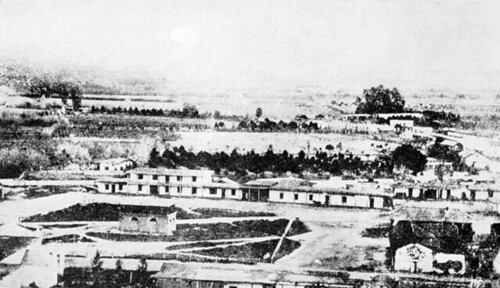
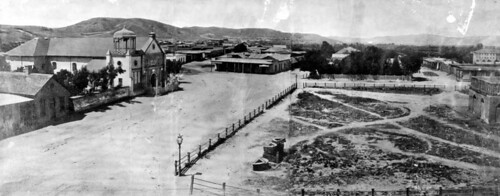
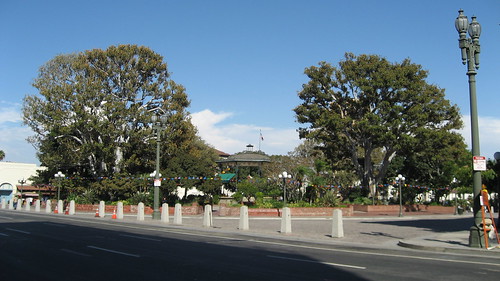
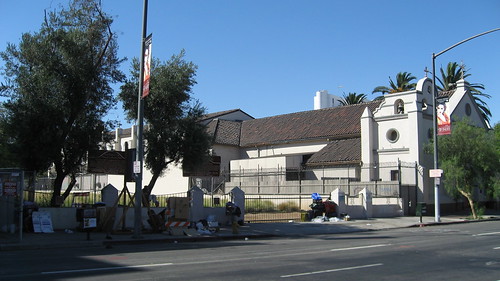
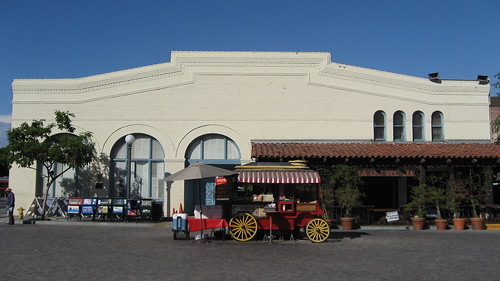
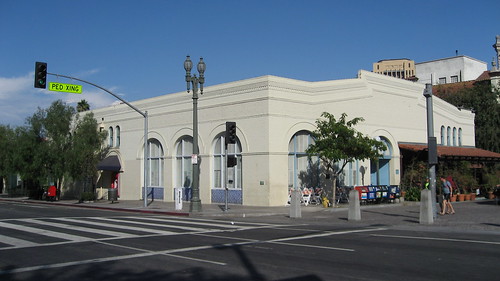
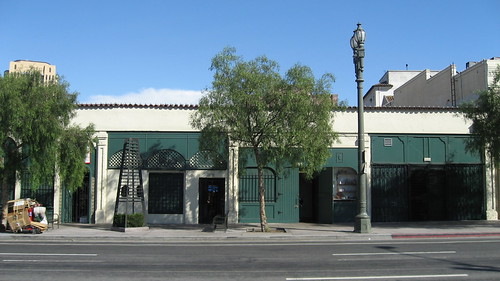
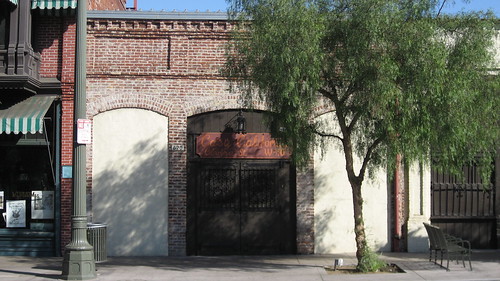


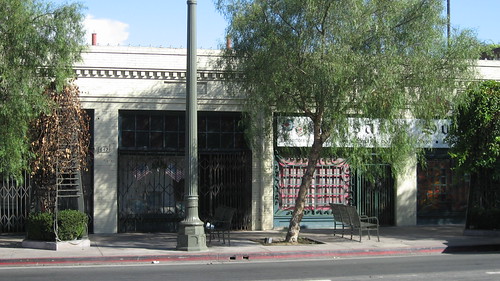
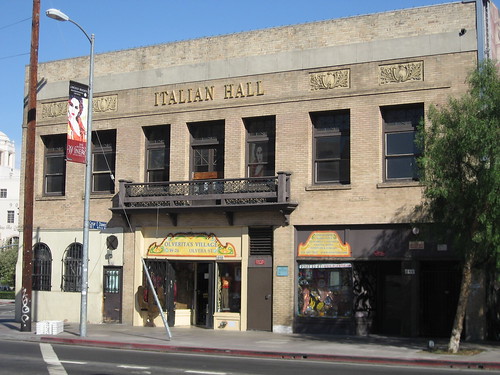
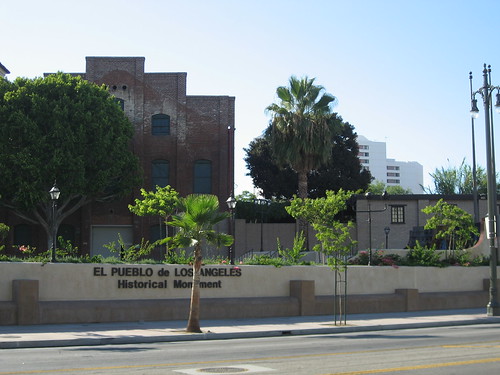

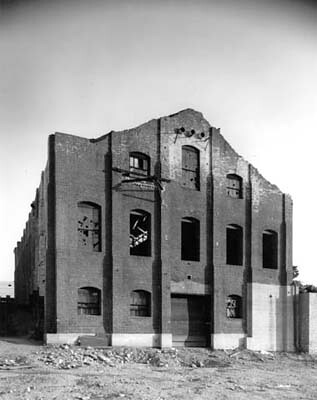
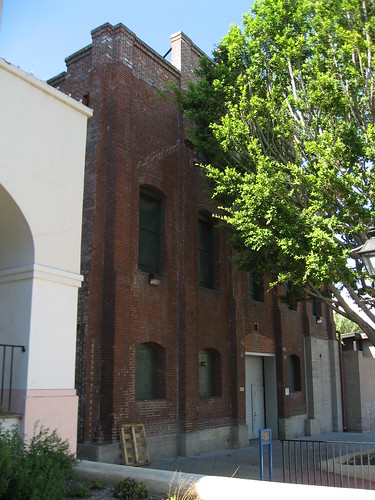
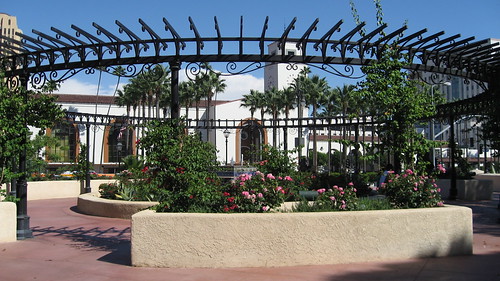
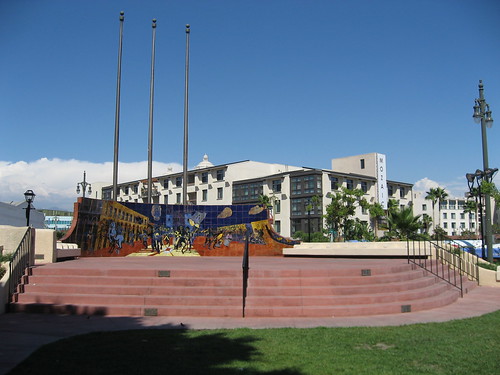
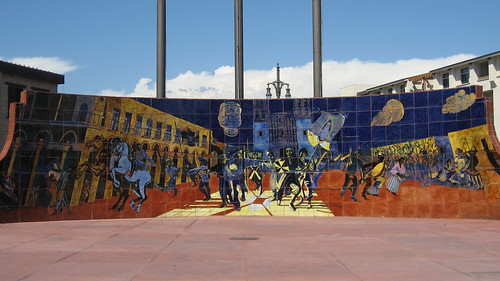


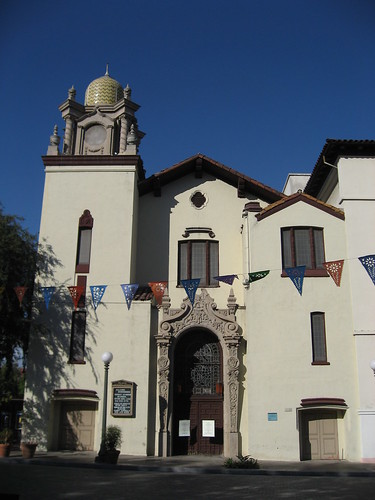
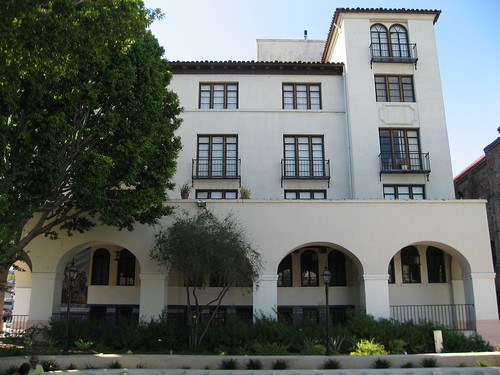
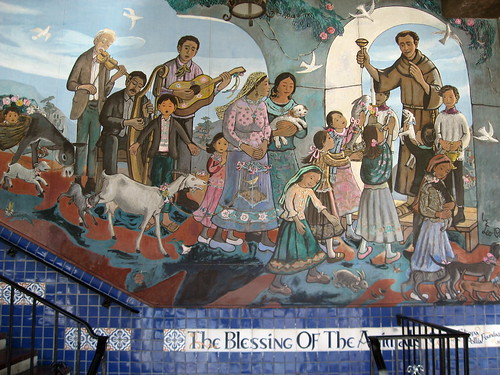

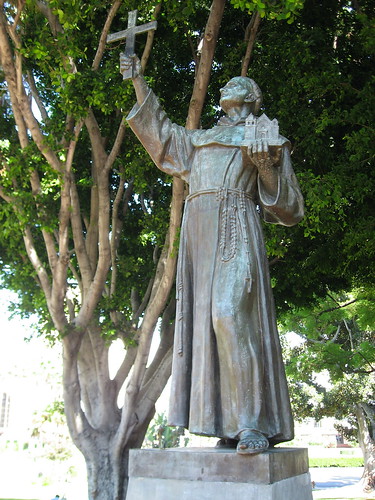
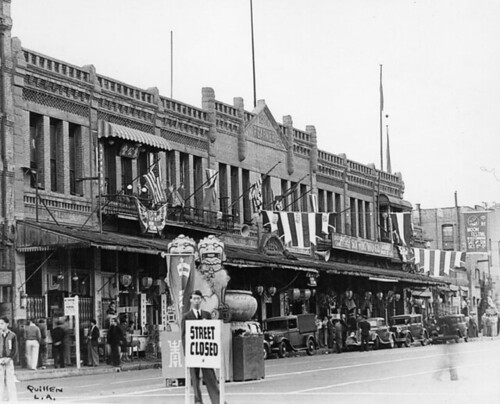

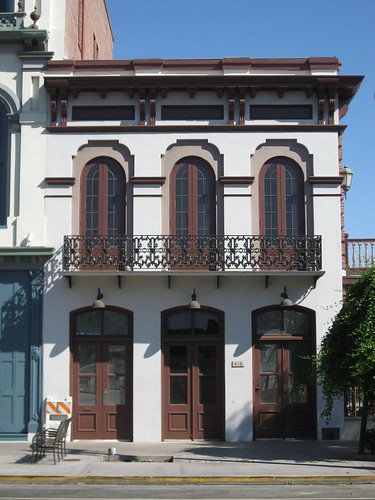

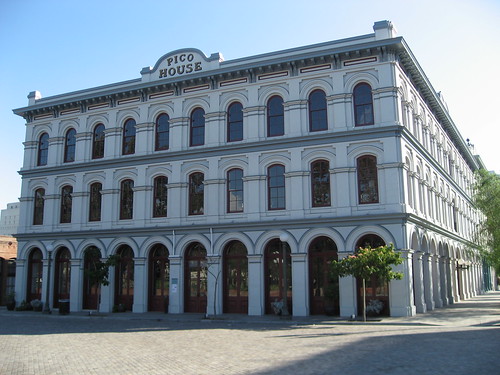
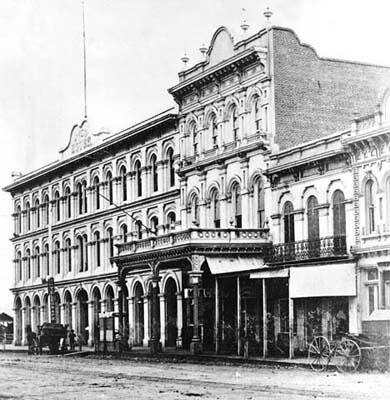
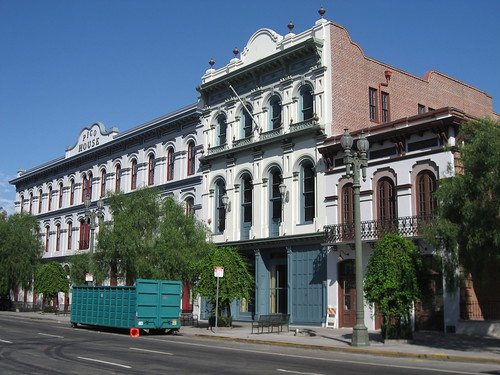
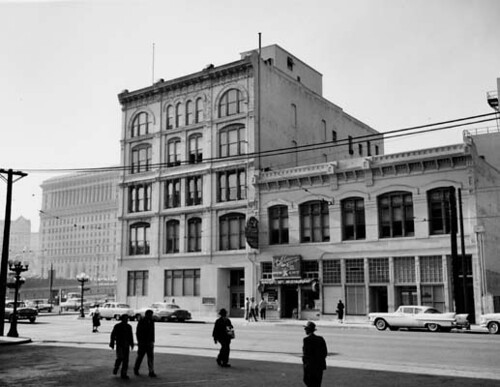
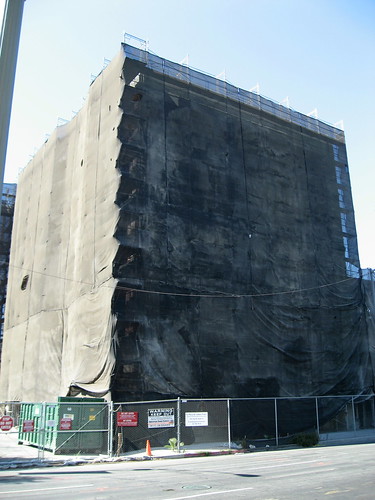
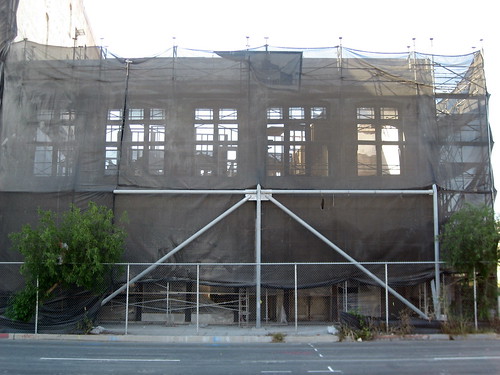
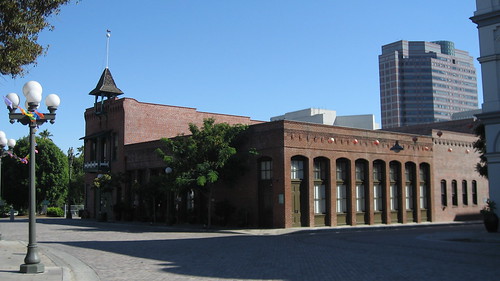
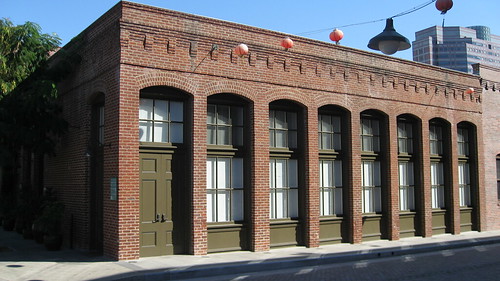
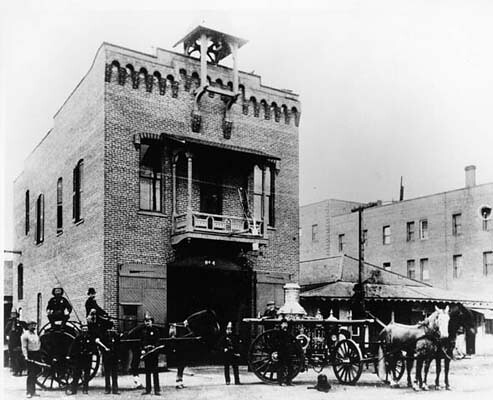
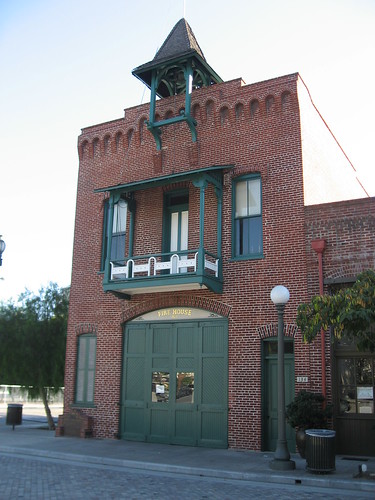
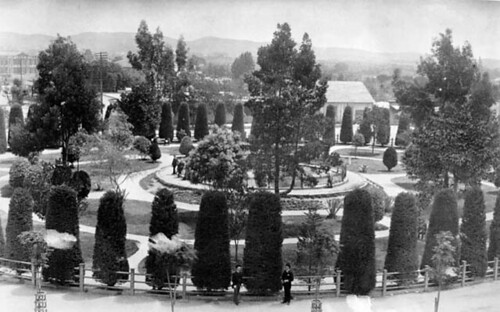

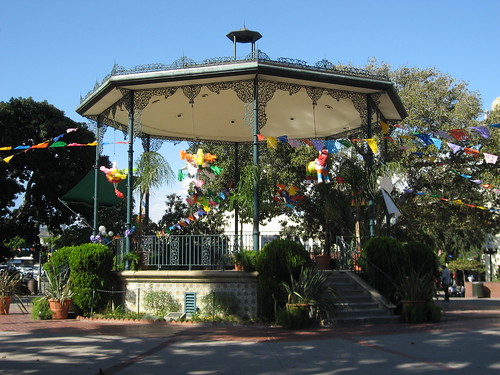
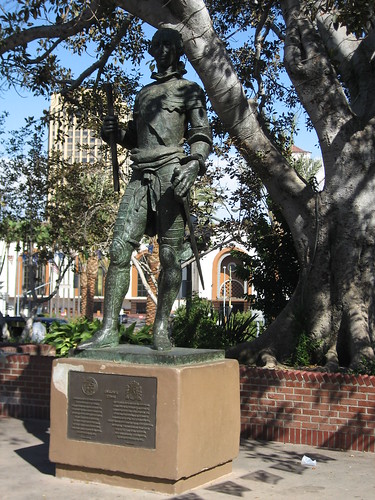



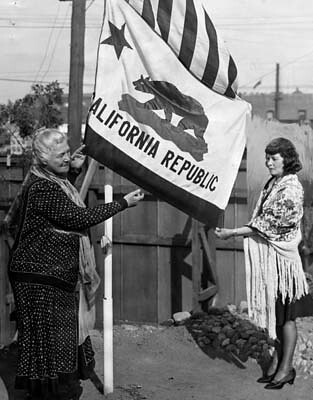


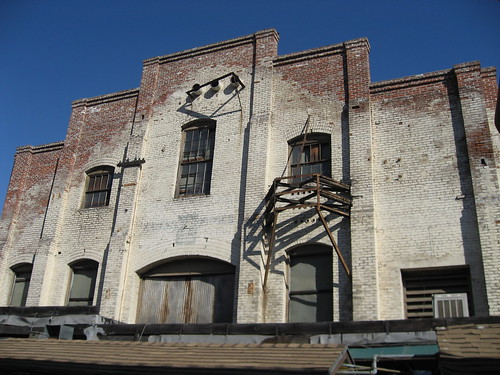


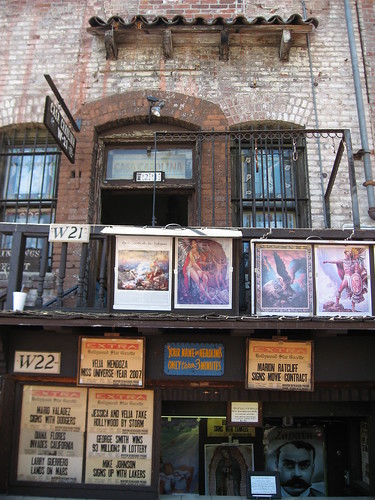

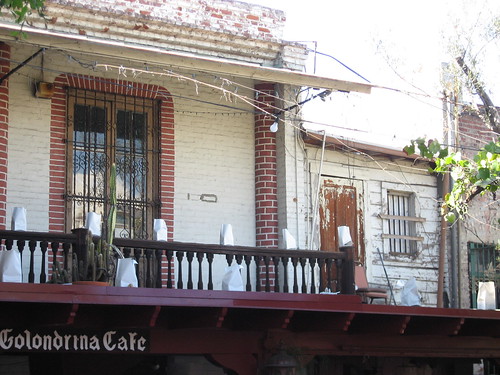
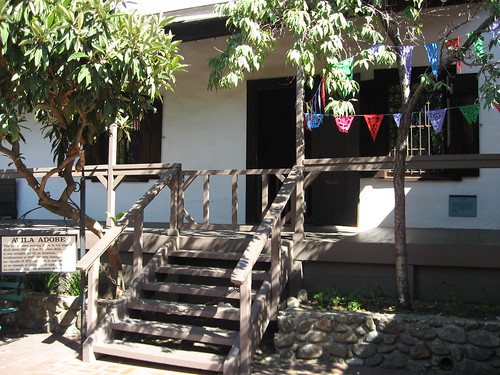
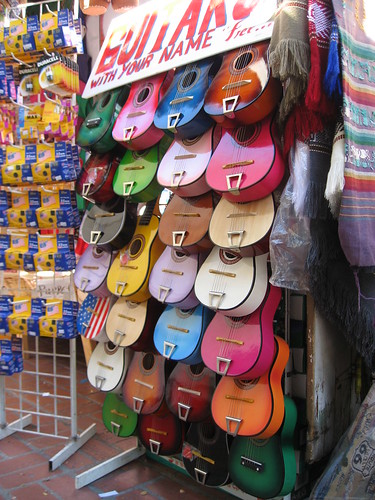

2 comments:
Great blog post, with some amazing photos and information.
I posted something similar after taking a group of homeschool kids from the Westside on a field trip of downtown L.A. this time last year.
http://www.experiencingla.com/2010/07/olvera-street.html
Cheers - "David from L.A."
Very enjoyable post!
Unfortunately, Christine Sterling was not the preservationist savior she has been made out to be. Although she saved Olvera Street, she had no use for the Chinese business and residents that remained wedged in between the Plaza and Union Station. She led the charge to replace the Lugo House with a parking lot, because her vision of what the Plaza should represent was a very narrow one.
For decades after the establishment of the historic park in 1953, the decimation continued. The Plaza Church and Brunswig Drug building are the only survivors of what, until the late 1970s, was a block of 19th- and early 20th-Century buildings. The rest are all gone now, replaced by a vast expanse of asphalt--another parking lot, of course.
That's no way to save a city's history.
Post a Comment